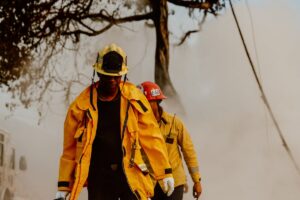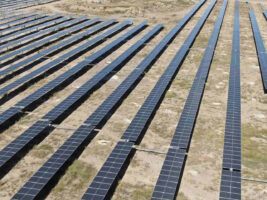Ampyx Power, the Dutch-based developers of a novel airborne wind energy technology, is looking to establish some of its first commercial scale projects in Australia.
Ampyx is establishing a corporate base in Sydney and is hiring, looking for a project developer among other positions. It plans to have a demonstration project up and running in early 2017.
There are a host of different companies developing airborne wind concepts, most notably Makani Power, co-founded by Australian inventor Saul Griffiths and now owned by Google, and which is soon to test its technology in a pilot project in Hawaii.
Some call these airborne wind technologies, gliders, others as energy kites. Yet others call them a pipe-dream. Ampyx, which calls its technology the PowerPlane, says its own analysis indicates that the technology looks capable of producing the world’s cheapest energy, and will not require ongoing subsides.
While some of its competitors focus on the fact that airborne technologies can access higher wind speeds, but Ampyx says the other main savings are from reduced need of materials, not having to over engineer for storm damage, faster construction time and relative portability.
The company also argues that its technology will not suffer the same visual issues that have made the technology a contentious issue in some areas. (Australian Treasurer Joe Hockey, who says he finds wind turbines “offensive” to look at).
 That’s because the gliders will be relatively small, will fly at an altitude of 200 to 500 metres, and when the wind is not blowing fast enough, will be on the ground and not seen.
That’s because the gliders will be relatively small, will fly at an altitude of 200 to 500 metres, and when the wind is not blowing fast enough, will be on the ground and not seen.
Ampyx says its PowerPlanes convert wind power into electricity using an autonomously controlled glider plane that flies repetitive cross-wind patterns, attached with a cable to a ground-based generator.
In that sense it might broadly be the open air equivalent to the wave energy technology developed by Carbnegie Wav Energy, which uses a tether attached to a buoy to generate the energy through to a pump, and then to a conventional generator.
Insiders say it is essentially advances in robotics that now physically permit these systems to be built. Theyhave to be automated to allow the glider to get into the air, operate, and then land when the wind speed has fallen to a level that is no longer useful.
Ampyx is evaluating potential sites all over Australia and New Zealand. South Australia and Western NSW look like the most likely candidates for their 2017 demonstration project.
Ampyx Power says its technology is a potential game-changer. “No need for ongoing subsidies. Minimal environmental impact. Safe, flexible and responsive,” it says on its website.
“Ampyx is developing a pipeline of PowerPlane® projects in Australia and New Zealand. We are currently seeking a project developer/manager with relevant wind industry or large scale solar experience.”
The company says is focused for the time being on proving to the wider world that the technology “does what we say it can.” It also says it has the potential to establish a high tech manufacturing industry in Australia serving Asia. Indeed, the company is looking at using Australia as its base for expansion into the massive Asian market.











